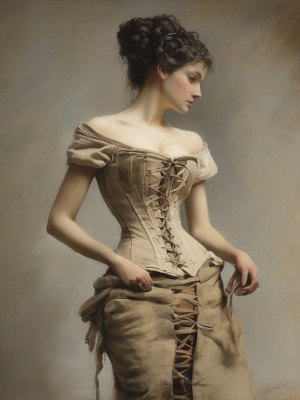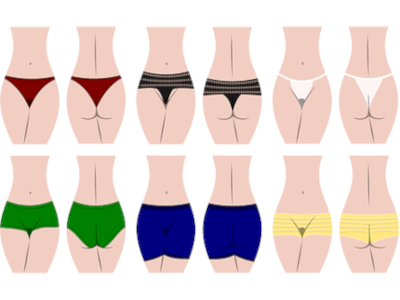Throughout history, one thing has remained constant, which is the need to cover a man’s private parts. The history of underwear is a combination of practicality, evolution, and fashion.
In ancient Greece, nudity was widely accepted, although some individuals might have chosen to wear underwear similar to the Egyptian perizoma, which are triangular pieces of linen with strings at the ends. These were called schenti and were worn by both pharaohs and lower-class individuals. Interestingly, King Tut was buried with 145 schenti, showing their importance in the afterlife. On the other hand, the ancient Romans had their own undergarments known as subligaculum, which were worn beneath tunics, togas, or robes. These undergarments, influenced by the ancient Etruscans, could either resemble a loincloth or shorts. Loincloth was made by tying strips of fabric around the waist and between the legs. Similarly, during the Middle Ages, Celts and Germanic tribespeople wore loose undershorts called braies. It is uncertain whether both men and women wore braies or how frequently they were worn, but men often used a belt or string to hold them up. Additionally, some individuals wore chausses, which resemble leggings. Eventually, by the 15th century, these two pieces more or less became one. Over time, these undergarments evolved into more intricate codpieces, designed not only for coverage but also for protection. Codpieces were crafted from rigid materials, adorned with decorations, stuffed, and progressively enlarged to symbolize masculinity.
The necessity for undergarments to be worn beneath tunics and similar clothing remained. Pantaloons became popular in the early 19th century as they helped keep outerwear clean by absorbing dirt and sweat. During this era, union suits were introduced, serving as the predecessors of long johns and onesies, to meet the needs of both men and women. Men could wear blouses and shirts on the outside, while women could discard their corsets, stockings, and garters. This was particularly beneficial, as industrialization led to more men and women working in factories.
When bicycles became a common mode of transportation, jockstraps provided additional support to riders as they navigated through uneven streets. The first jockstraps, named after the straps worn by “bicycle jockeys,” were introduced in 1874. The connection between underwear and sporting goods continued into the early 20th century, thanks to Jacob Golomb and his elastic waistband swimsuits and boxing trunks, which eventually led to the development of boxing shorts as undergarments. Initially, boxers were not widely accepted, unlike briefs, which were also created in the early 20th century. In 1928, Arthur Kneibler joined the Cooper Underwear Company, where he introduced underwear briefs inspired by jockstraps. Kneibler’s jockey shorts became an instant success upon hitting the store shelves in 1935.
In the 1950s and 1960s, underwear transitioned from being traditional white to a variety of colors and patterns, thanks to the introduction of fabrics like rayon and Dacron. This shift allowed for the creation of new styles for both men and women. Consequently, underwear advertisements became more explicit, with bikini briefs and nylon thongs joining Tighty-Whities in marketing campaigns. The 1980s and 1990s saw a debate emerge: boxers or briefs? Boxers gained popularity post-World War II as military men adapted to wearing boxer shorts. However, as the century progressed, questions arose regarding the health benefits of boxers, leading to a trend of asking prominent figures, such as U.S. President Bill Clinton, about their preferences. Subsequently, boxer briefs emerged as a hybrid option, with designer John Varvatos often credited with their invention in the early 1990s. The rise of boxer briefs was set in motion by a controversial 1992 Calvin Klein ad campaign. While innovation in underwear has slowed since then, any new product launch is bound to attract significant attention.
Sources:
https://www.nationalgeographic.com/history/article/underwear-history-ancient-boxers-briefs


